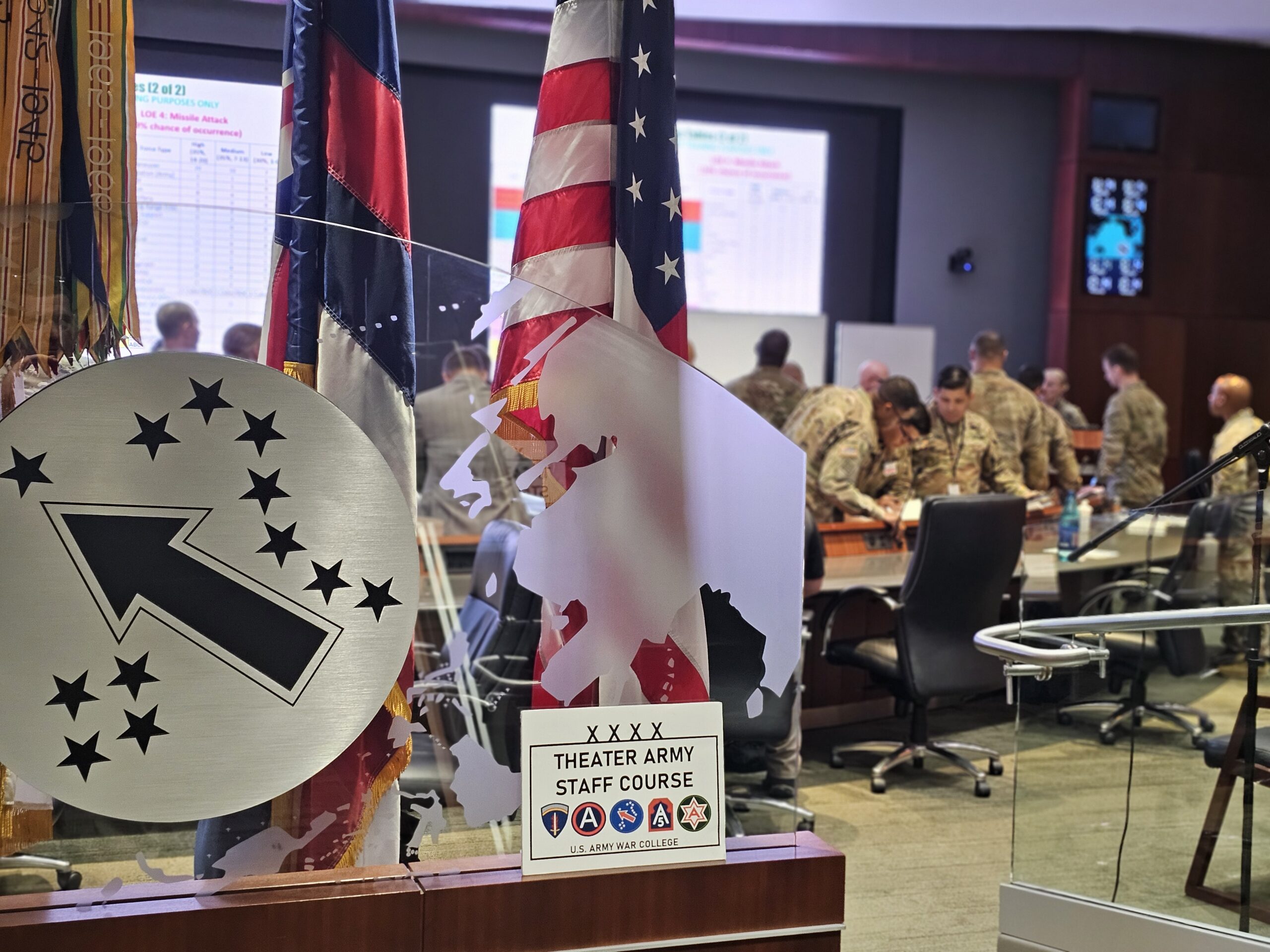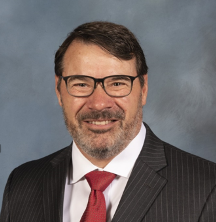Not Today–and Tomorrow’s Not Good Either: The Mission of the US Army Pacific

Not Today–and Tomorrow’s Not Good Either:
The Mission of the US Army Pacific
By John Nagl
The Headquarters of the United States Army Pacific, or “USARPAC”, sits at Fort Shafter on the forward slope of a mountain on Oahu within sight of Pearl Harbor. Pearl, of course, was the site of the worst day in American military history on December 7th, 1941, when intelligence warnings of a Japanese surprise attack on the American fleet at anchor there were ignored at the cost of more than 2000 Americans killed and 1000 wounded. The Japanese attack was well planned and executed; American defenses were neither. A rudimentary Army radar installation on the north shore of Oahu picked up the incoming waves of Japanese planes and warned the Headquarters of the U.S. Army’s Hawaii Division before the strike, but the Army lieutenant who answered the phone at Fort Shafter decided that the radar signals indicated the arrival of six B-17 bombers from California. He didn’t notify the Navy.
The United States Army Pacific, and its higher headquarters the United States Indo-Pacific Command, exist to make sure that the United States is never caught flat-footed again. I was in Oahu a few weeks ago (tough duty) as part of a team from the United States Army War College, where I teach senior officers military strategy, planning, and operations; my students at USARPAC were mostly more junior, captains and majors and senior non-commissioned officers who worked at Fort Shafter and across the Indo-Pacific.

The course I taught is called “Theater Army”; it describes and analyzes the role of the USARPAC in “setting” the IndoPacom “Theatre”. We have five Theater Armies at present, covering North and South America, Europe/Africa, and the Middle East. Eighth Army, in Korea, fills a similar role for the command that is ready to “fight tonight” to defend South Korea against an attack from the North; one of our students was a Major from Eighth Army whose job is to coordinate the mobilization of Army National Guard and Reserve soldiers for service on the Korean peninsula.
Although my job was to teach parts of the Theater Army course, I didn’t understand the organization very well at the start of the week; my own Army service some decades ago was at higher levels of command, in the Pentagon, and lower, in tank divisions in Europe and the Middle East. When the first speaker at the course opined that the Army was the most important level of command, I kept a straight face but laughed inside; obviously, the levels at which I had served in Washington and on the ground, where the tank tread meets the mud, were of greater consequence.
By the end of the week, I had changed my mind. It didn’t hurt that our concluding speaker was one of my favorite soldiers, retired General Vince Brooks, who commanded both USARPAC and ARCENT/3rd Army during his time in uniform (as well as U.S. Forces Korea) and made the same argument about the importance of this level of command. General Brooks explained that operational units like divisions and brigades could be added to the theater or taken away and reassigned elsewhere as necessary, like appliances in a house, but they all needed the electricity and water and fuel that the theater army provides; some of our students came from the Theater Support Command that provides all of those necessities to fighting units when required.
Just as important, the job of the Theater Army is to know its theater like a homeowner knows his neighborhood. We heard from some of the intelligence officers who maintain persistent surveillance of the activities of China and Russia, guarding against a recurrence of a Pearl Harbor type attack. We repeatedly heard the phrase “unblinking eye” and gained an understanding of some of the capabilities—on the ground, at sea, in the air, in space, and in the cyber domain—that keep watch on possible adversary capabilities and attempt to discern their intentions. One of the major topics of discussion was whether China was a challenge, an adversary, or an enemy; its behavior provides support for all three descriptions even as it remains a significant trading partner. Whatever term was used, all agreed that the job of the theater army was to ensure that the leaders of possible hostile powers were convinced every day when they woke up that the capabilities of the United States military and our partners in the region meant that today wasn’t a good day to try us—and tomorrow wasn’t likely to be much better.
One of the most powerful tools to influence adversary decisions is an exercise program called Pacific Pathways that General Brooks employed and that current USARPAC Commander Charles Flynn has dramatically expanded. Pacific Pathways brings American units from the continental United States and Hawaii to conduct training with partners in the region like the Philippines, Indonesia, and Vietnam. General Flynn schedules those training events during times when the waters of the Straits of Taiwan are calm and a Chinese leader might consider rolling the iron dice of war; the presence of thousands of soldiers, sailors, airmen, and Marines on allied soil nearby increases deterrence of surprise attacks. Not today, China; not today. General Flynn is scheduled to relinquish his command to my West Point Classmate General Ron Clark in a few months; unlike General Short, the Army officer commanding in Hawaii on December 7th, 1941, General Flynn has done his job well as part of a Joint Navy, Air Force, Army, and Marine team.
As I write this, we don’t have a carrier in the western Pacific, a source of some concern despite all of the other capabilities we and our partners have in the region. (The carriers are in the Middle East dealing with other threats, a reminder that our global responsibilities are a challenge even for the greatest military in the world.) The Air Force is filling the gap by forward stationing B2 bombers in Australia, which has recently expanded its partnership with the United States at least in part due to concerns about the rising power of China. Not tonight, China, Russia, North Korea; not tonight.
One of the students in our Theater Army course was a Lieutenant Colonel from the Japanese Army; he works closely with the American Army and is fully integrated into an increasingly multinational USARPAC Headquarters where the Deputy Commanding General is an Australian. In fact, I saw a new security classification release authorization for the first time in Oahu. I knew that the United States military regularly shares information with the United Kingdom, Australia, New Zealand, and Canada—“Five Eyes”, from the security code “AUS/CAN/NZ/UK/US EYES ONLY”. At USARPAC, the information we shared were labelled “AUS/CAN/NZ/UK/US/JAPAN EYES ONLY”—an extraordinary turnaround from that horrible day 83 years ago when the Japanese eyes on Pearl Harbor were not friendly ones.
Today the Japanese, Australian, and American eyes are focused on China, Russia, and North Korea. The sailors whose remains still rest on the bottom of Pearl Harbor in the USS Arizona, sunk on that horrible Sunday morning so long ago, are overwatched by the USS Missouri; in a wonderful coda to history, the battleship in Tokyo Bay where the war in the Pacific ended is now a museum anchored next to the USS Arizona memorial at Pearl where the war started. And battalions of those sailors’ and Marines’ sons and daughters are standing watch across the IndoPacific to make sure that it never happens again. Not tonight, and not tomorrow.
John Nagl is Professor of Warfighting Studies at the US Army War College. This article reflects his views and not those of the United States Army War College, US Army, or USARPAC.







